Most of the architecture in this district dates from the era when Budapest asserted its right to be an imperial capital, between 1860 and 1918. Neoclassical and Art Nouveau buildings abound. Wandering around is a real pleasure.
Ferenciek Tere (Franciscan's Square) is always full of life whatever the time, full of cafes and shops, and this pool that was put to good use when it was very hot during the time we were there.
The big wheel dominates the square
I loved this building but could not find out anything about it, so I took lots of photographs to compensate
These are only a fraction
a closer look at that imposing tower
and closer
detail
and at night.
The area is full of imposing buildings
a sculpture outside one of the hotels
I had to go in to have a proper look at this astonishing flower display
looking closer
The Gerbeaud parisserie building that dominates Vorosmarty square
Budapest's most famous confectioners, founded in 1858, a popular rendez-vous for the middle classes at the time.
I went in to take this photograph
and then, 10 minutes later it started raining - the only time it rained during our stay in the city. Everyone rushed in, including us, so we had no choice but to sample the apple strudel with cinnamon ice-cream.
The gilded ceilings and the whole atmosphere recall the Belle Epoque.
The building also looks good when lit up at night.
The Bershka store building which was completed in 1911. During the communist era it was the place to get your Western-style clothes.
Bronze panels, plant motifs and imposing sculptures
one more view.
a grand entrance.
Still in Vorosmarty Square, a modernist building
The statue of Mihaly Vorosmarty, poet, in the middle of the square
Something different: a performance artist without the performer - just the shell
and another one
Three in all. People kept touching them trying to find out if they were made out of bronze. In fact they are made of cloth and other materials, and I saw the guy who put them there, occasionally going to the buckets and collecting the coins
Different and ingenious

This is the former Bank Palace, built in the heyday of Hungarian self-confidence, by Ignac Alpar. When the Budapest Stock Exchange reopened its doors in 1990, this was its new home. It has now been turned into a major retail centre.
An Art Nouveau building in a nearby square
And another one
looking closer.
This is Vaci Utca, one of the main shopping streets, and every building here is a marvel
some of the ground floors don't look so good now, as shops have spoiled the beautiful lines, so you have to constantly look up
Beautiful lines in this building
looking closer
every building is so different, even if in the same style
a little sculpture that is not yet another man on his horse
One of the finest works of Miksa Roth at no. 3 Szervita ter, a square that contains the best and the worst of 20th century architecture, but we will just concentrate on the best. This is a former bath house dating from 1906
its gable has a superb Art Nouveau mosaic of Patrona Hungariae (Our Lady) flanked by key figures from Hungarian history.
Still in Szervita Ter, one of the earliest modernist buildings in Budapest, with geometric motifs and decorative screws.
The third notable building in the square is the Rozsavolgyi building, built by modernist Bela Lajta whose earlier association with the National Romantic school is evident from the majolica bands on its upper storey.











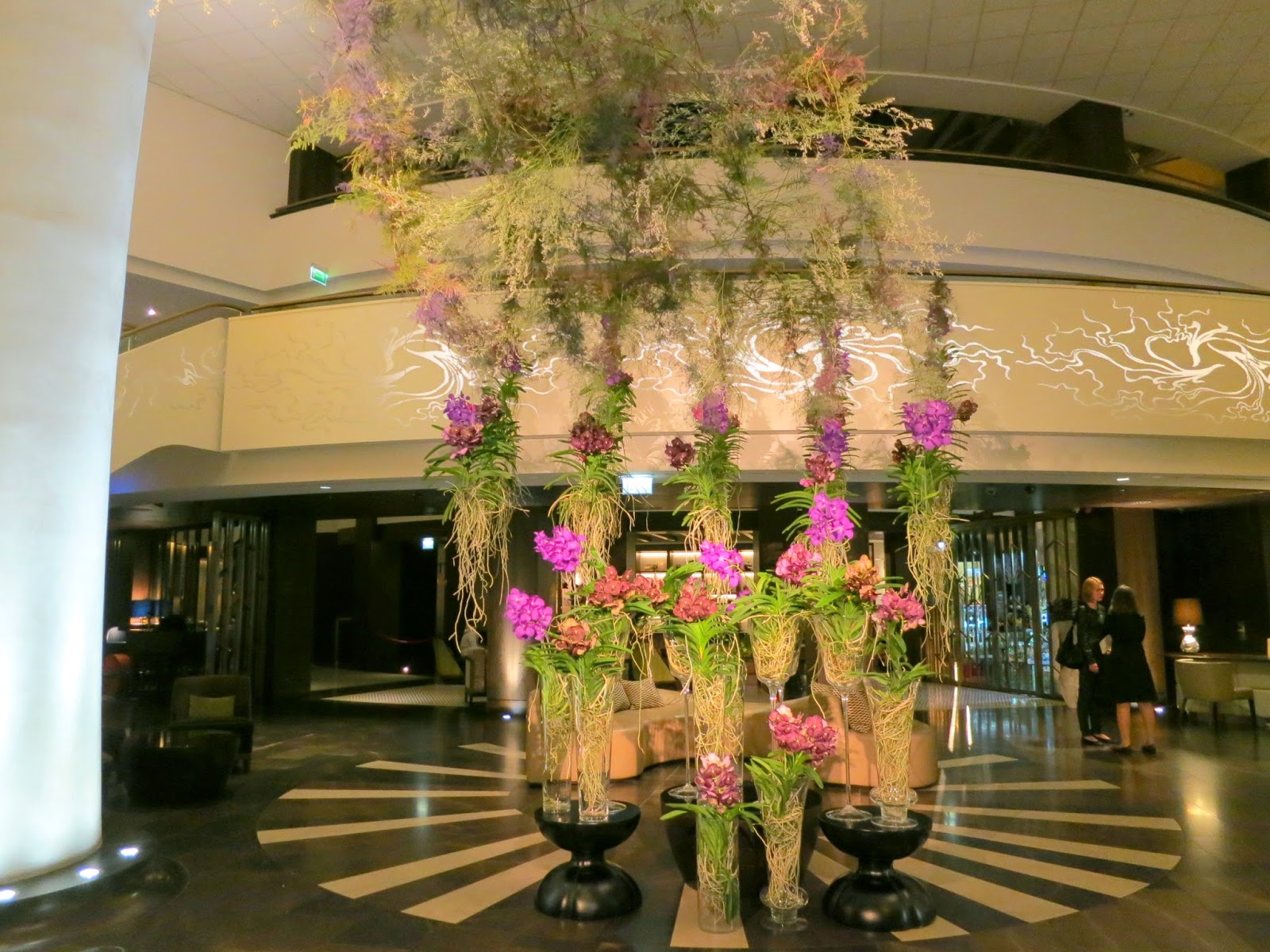












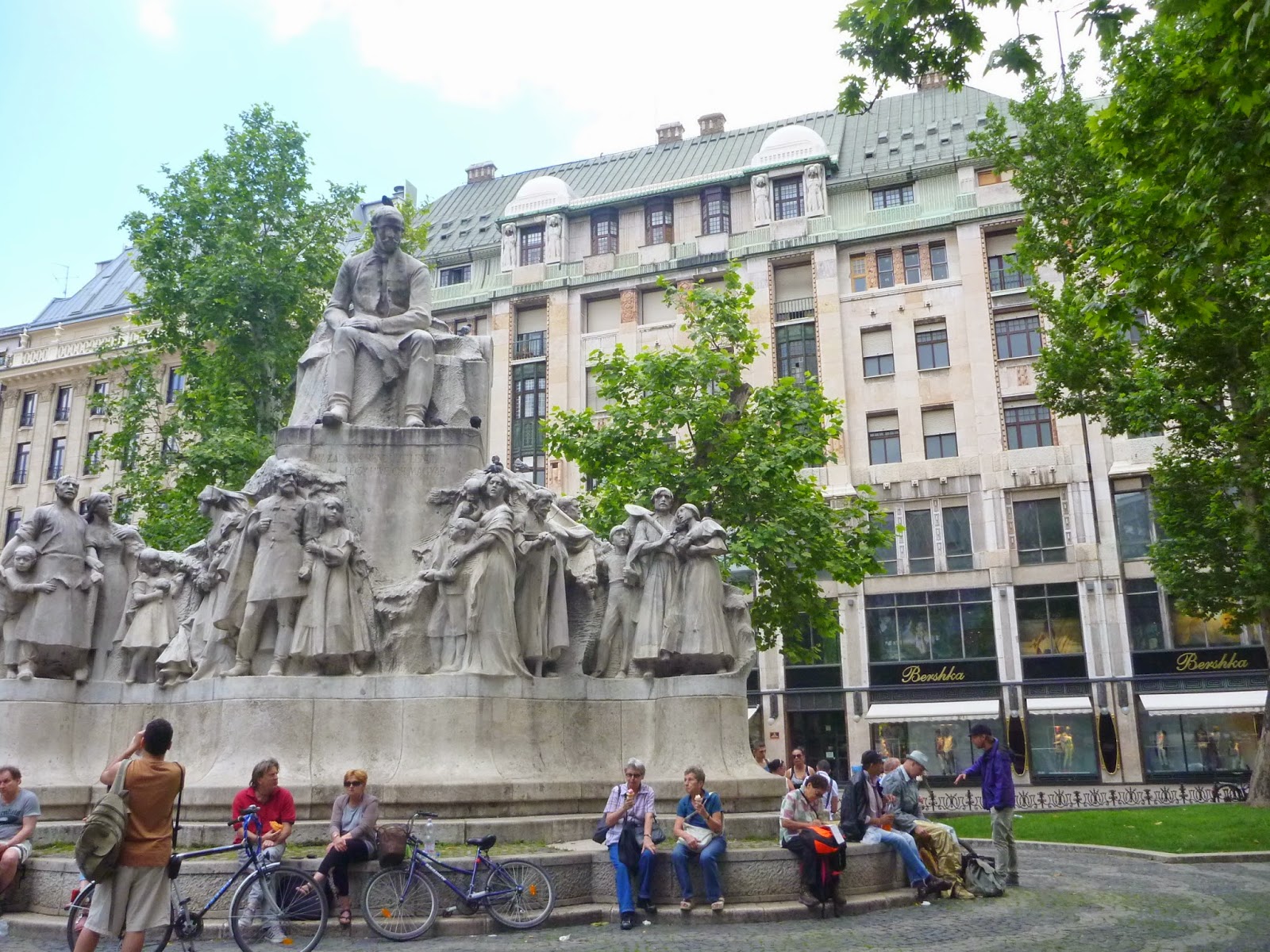



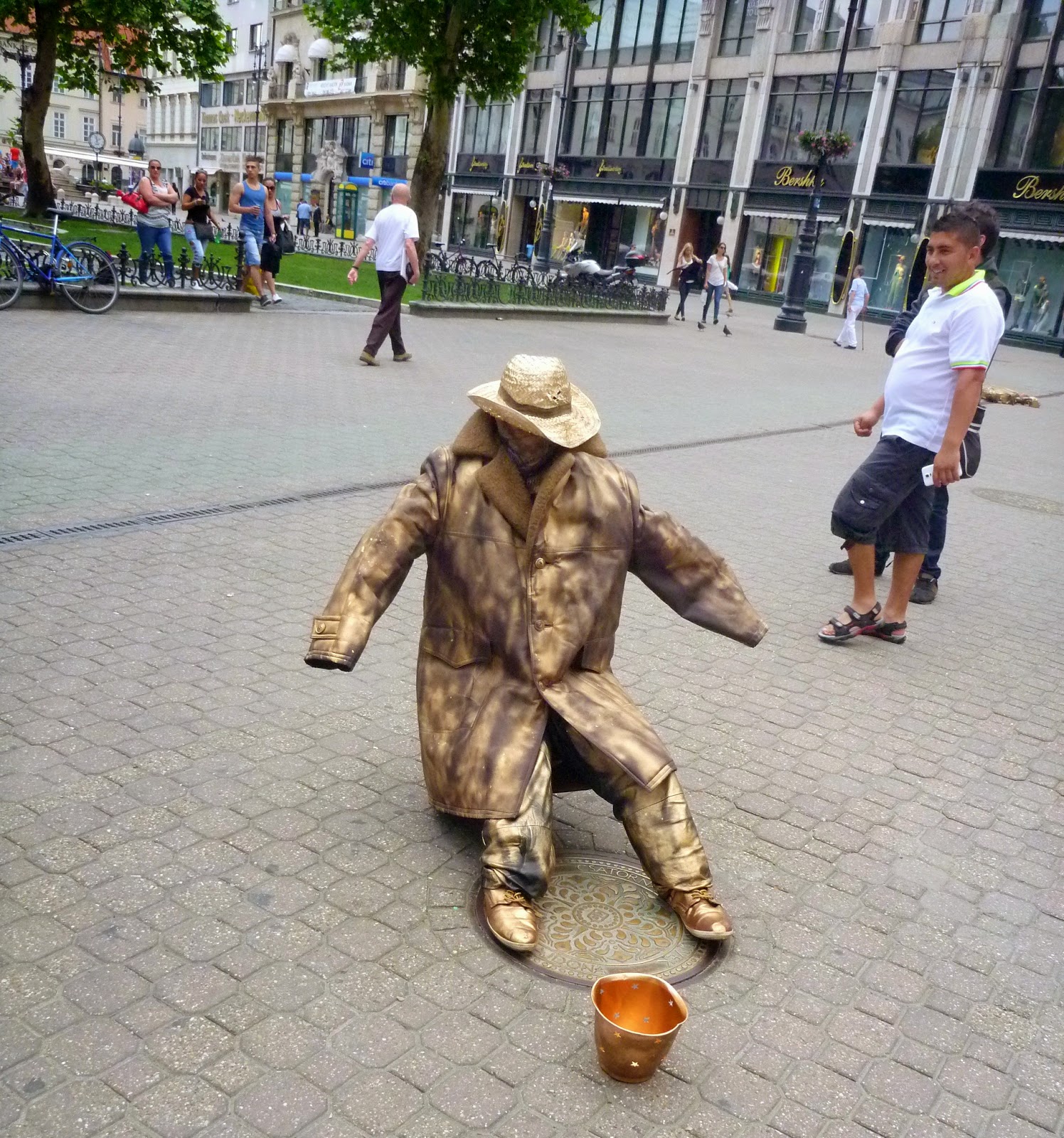




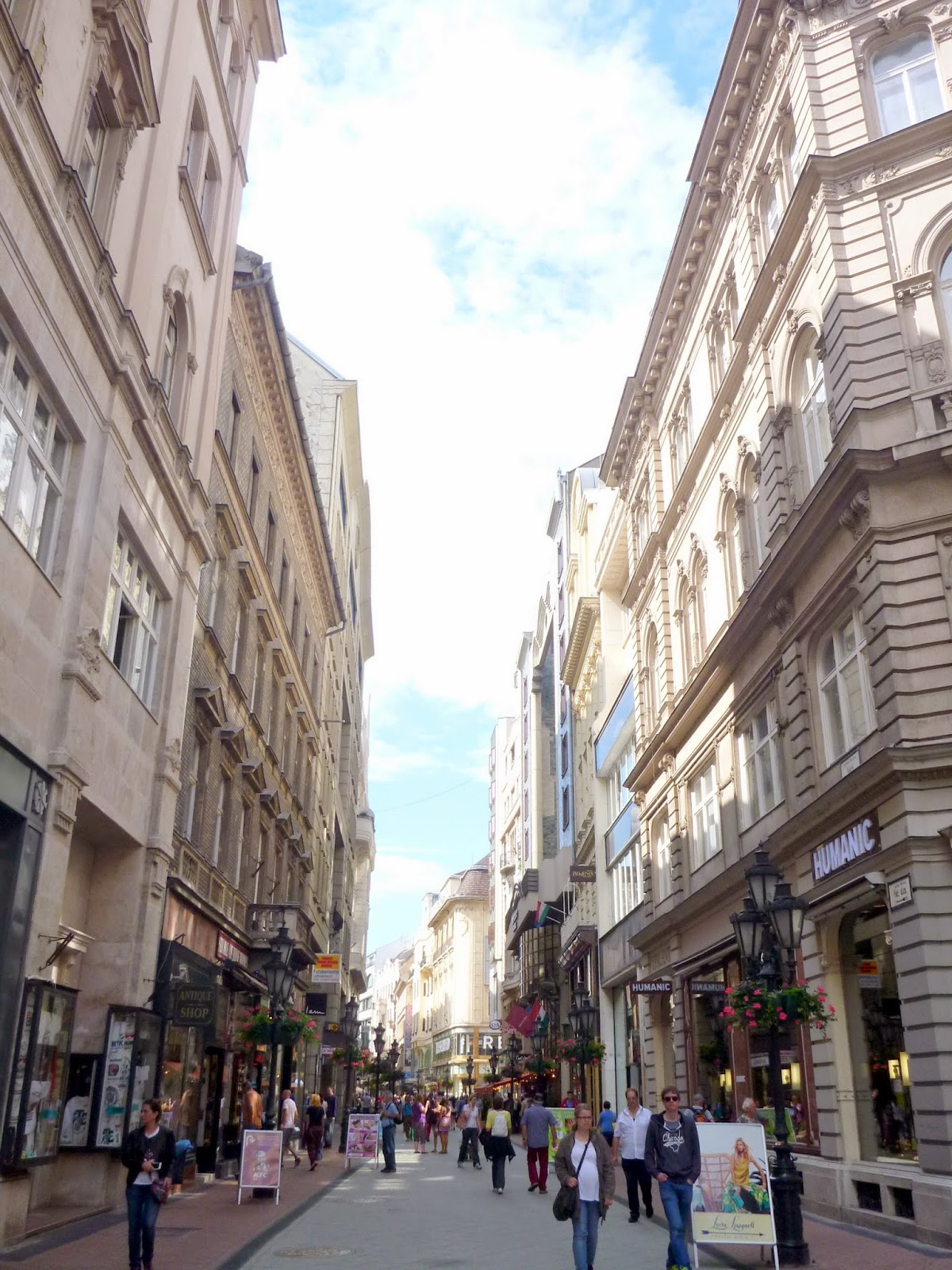

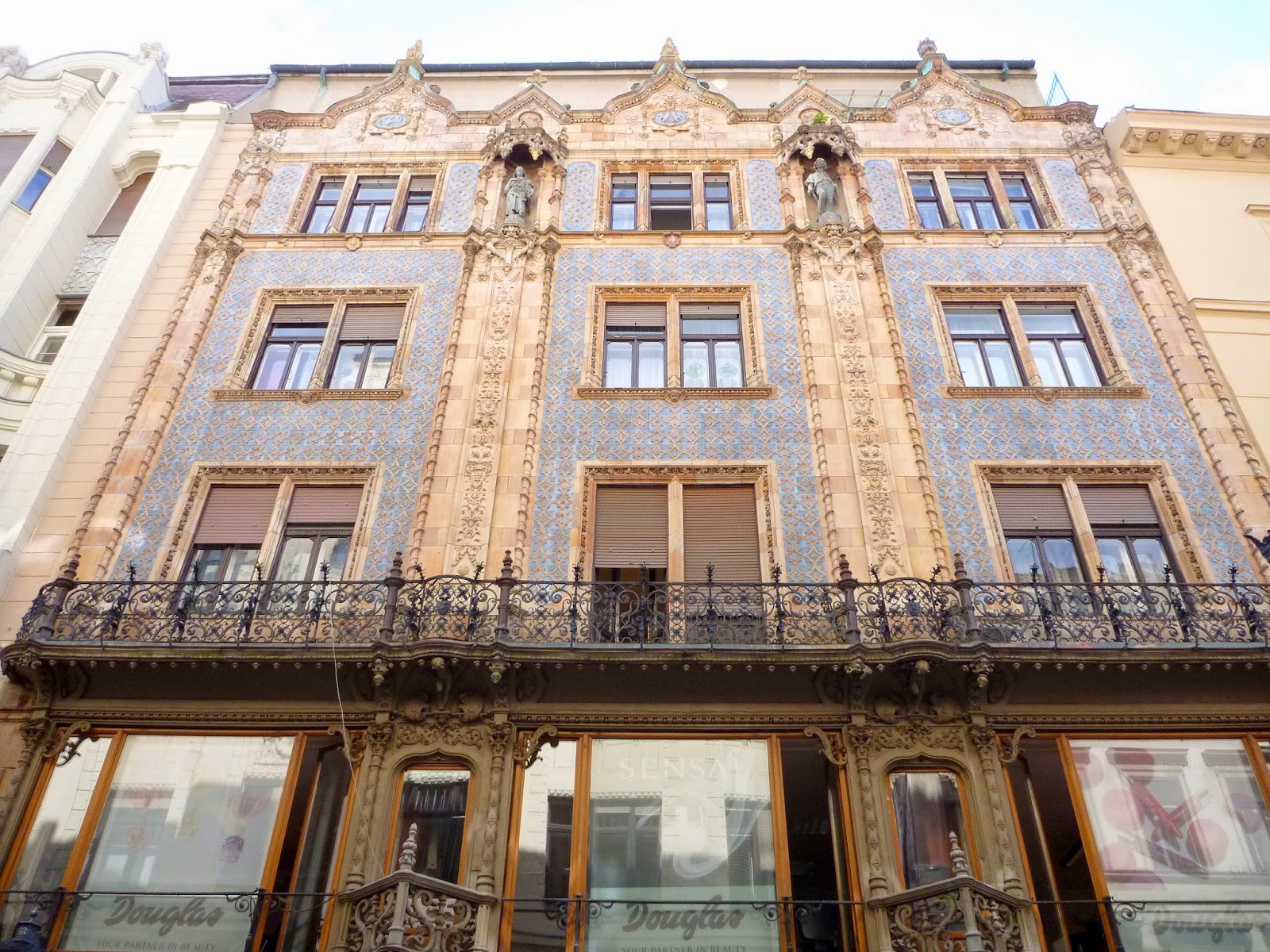











No comments:
Post a Comment